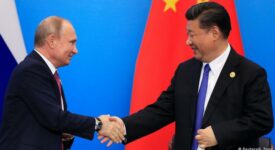EU defense ministers met for the first time in the “PESCO format” earlier this week. The Permanent Structured Cooperation (PESCO) is the structural integration pursued by 25 of the 28 national armed forces of the European Union. PESCO was enabled by the Treaty of Lisbon in 2009 and initiated in 2017. The initiative plans to initially integrate a number of projects due to be launched in 2018.
The PESCO format of the defense meeting means that while all defense ministers met, only those participating in the structure were involved in adopting legal acts. The agreement is to seek a consolidation of defense spending and thus reduce Europe’s heavy reliance on the United States. This week, the leaders adopted a decision formally establishing a first list of 17 collaborative projects to be developed under PESCO and a game plan for their implementation. The projects include, for example, a European medical command, upgrade of maritime surveillance, a network of logistic hubs, a cyber threats sharing platform or armored infantry fighting vehicle.
EU foreign affairs chief Federica Mogherini commented that military mobility within the bloc can only be achieved through EU action, which is what the ministers had agreed. This is also why the European Parliament has been calling for a “Military Schengen” and Mrs. Mogherini stresses that an instrument to finance military and defense-related expenditures was needed. “It would be a European Peace facility, off budget, that would provide support, capacity building and assistance to our partners’ armed forces,” Ms. Mogherini said.
The Commission announced the establishment of an EU Defense Fund in September 2016 to help member states acquire and develop key strategic capabilities faster and in a collaborative fashion. Until 2020, the EU executive will allocate €590 million to the fund and as of 2020, it is proposing to allocate at least €1.5 billion per year.







